Many people who follow the robot mower market really enjoy keeping up to date with smaller start-ups. These usually appear on crowdfunding sites like Kickstarter or Indiegogo and they are generally some of the more ambitious projects.
Of course, with those lofty ambitions, it’s not unusual for these startups to fall short or maybe even bend the truth a little regarding the mower’s proposed features. But every now and then a great mower emerges.
One of the recent mowers to gather a lot of attention on the crowdfunding scene was the Novabot. This mower promised to offer GPS/RTK navigation technology along with computer vision. Combined, this was promised to make setup a snap and eliminate any need for a perimeter wire.
So, does the Novabot live up to its promises?
Below, we’ll go over what we learned from our time with the Novabot and how it compares to other more established mowers out there.
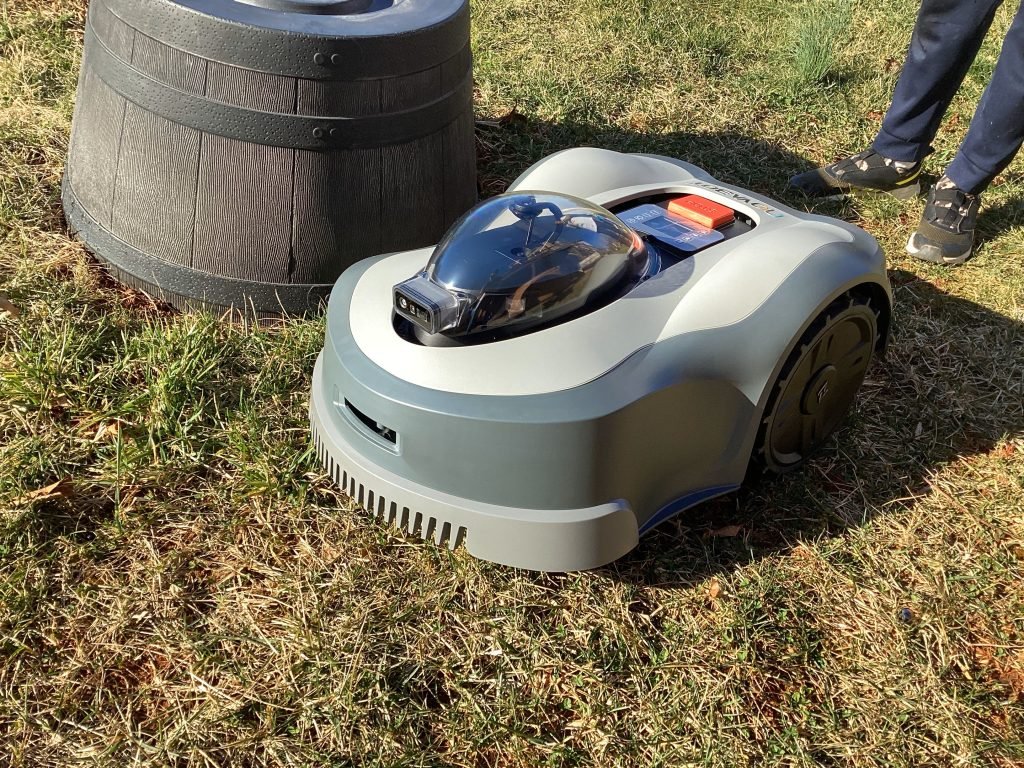
Who Makes The Novabot
The Novabot founders are a small team of engineers. The Indiegogo project claimed to have roots in the well-known GRASP Lab (General Robotics, Automation, Sensing, & Perception Lab) located inside the University of Pennsylvania. Although they didn’t elaborate on that relationship.
The team was transparent about their founders and everyone involved with the project from the CEO to the engineers were all listed on the website along with their job titles.
But overall, this is a very small team and this is their first project together. This is typical of startups, but it should be noted so people don’t confuse this with a large, established brand.
The Novabot crowdfunding campaign is over and the Novabot is now available for preorder via their website. The early versions have shipped and according to Novabot, full production is underway.
The Novabot Mowers

The Novabot comes in two configurations. There’s the N1000 and the N2000. Both share identical features and the main difference is their recommended range. They’re recommended for 1/4 acre and 1/2 acre lawns respectively.
They both use the same GPS/RTK navigation along with their own proprietary computer vision system.
While some newer robot mowers are using LIDAR SLAM (Light Detection and Ranging – Simultaneous Localization and Mapping) for computer vision, the Novabot uses a ToF (time of flight) sensor instead of LIDAR.
Both systems can use infrared imaging but ToF-based sensors can be smaller and also cheaper to produce while delivering similar results in some applications.
This seems like a good trade-off when it comes to robot mowers as they are relatively slow-moving, so the benefits of ToF outweigh the downsides.
The mower even has a cockpit-style transparent bubble on the top to house the sensor array and camera. Some people may like this bit of styling while others felt it looked a little too retro. As always, styling comes down to personal preference but we had no issue overall with the looks of the Novabot.
Setting Up The Novabot
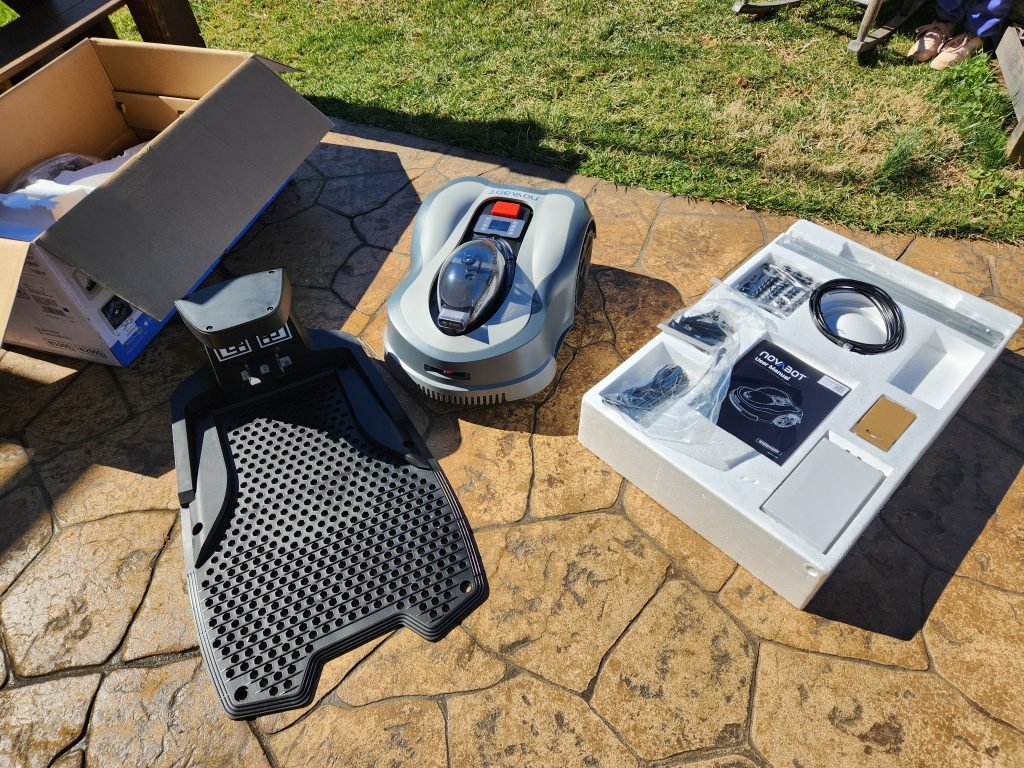
Being a GPS/RTK-based mower with computer vision, this mower requires no perimeter wire. It still requires a base station (GNSS antenna) to be placed in the yard. The GNSS antenna is included with both models.
The GPS/RTK system also uses an onboard Visual Inertial Odometry system. This maps out the lawn during the initial setup phase and if the RTK signal is lost, the mower will continue on the path it already has learned until it picks the signal back up.
If it doesn’t pick up the signal, it will measure its speed along with the known path and turn when it should, even without a signal.
This is a clever workaround for the shortcomings that RTK systems have. A few other mowers have this, but it’s good to see Novabot applying this to push RTK technology.
I love that Novabot included huge quick-start cards in the box to explain exactly what to do in clear language. No need to dive into a confusing owner’s manual filled with warnings and bad illustrations!
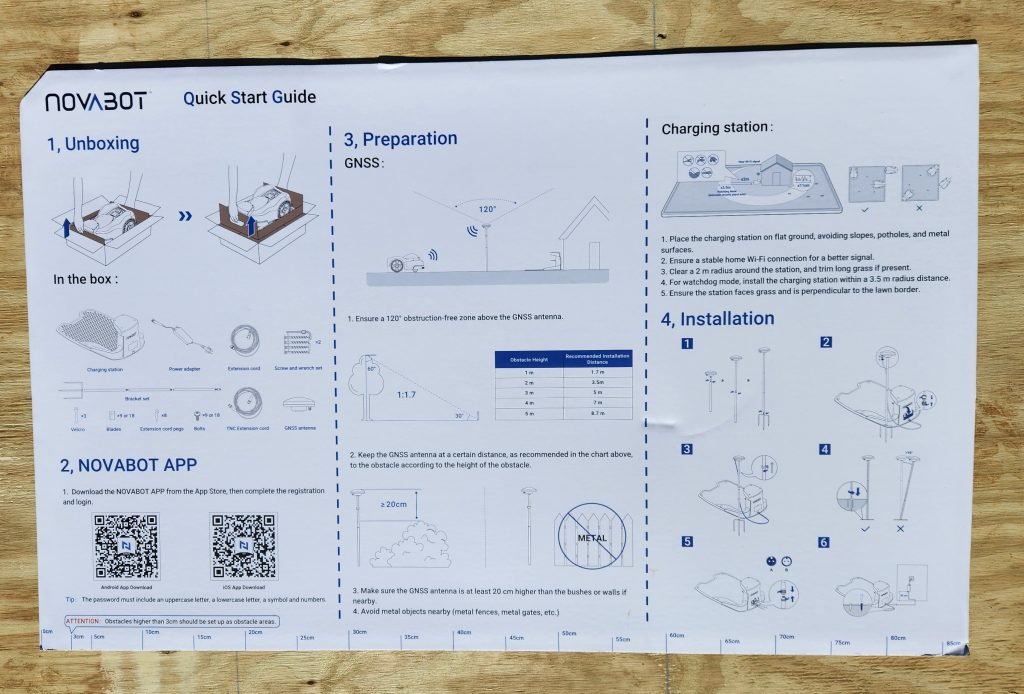
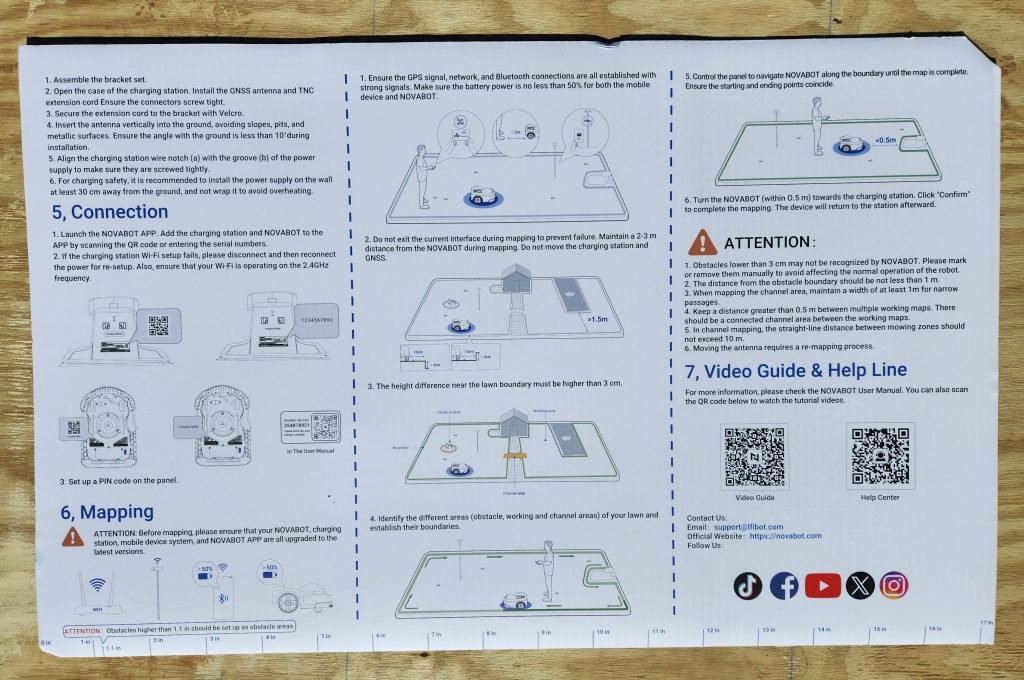
Overall, this was the easiest robot mower I’ve ever setup. There were no issues connecting the Novabot to the RTK or wifi and things just went as smoothly as possible. Other robot setups should have been this easy, but they never actually were.
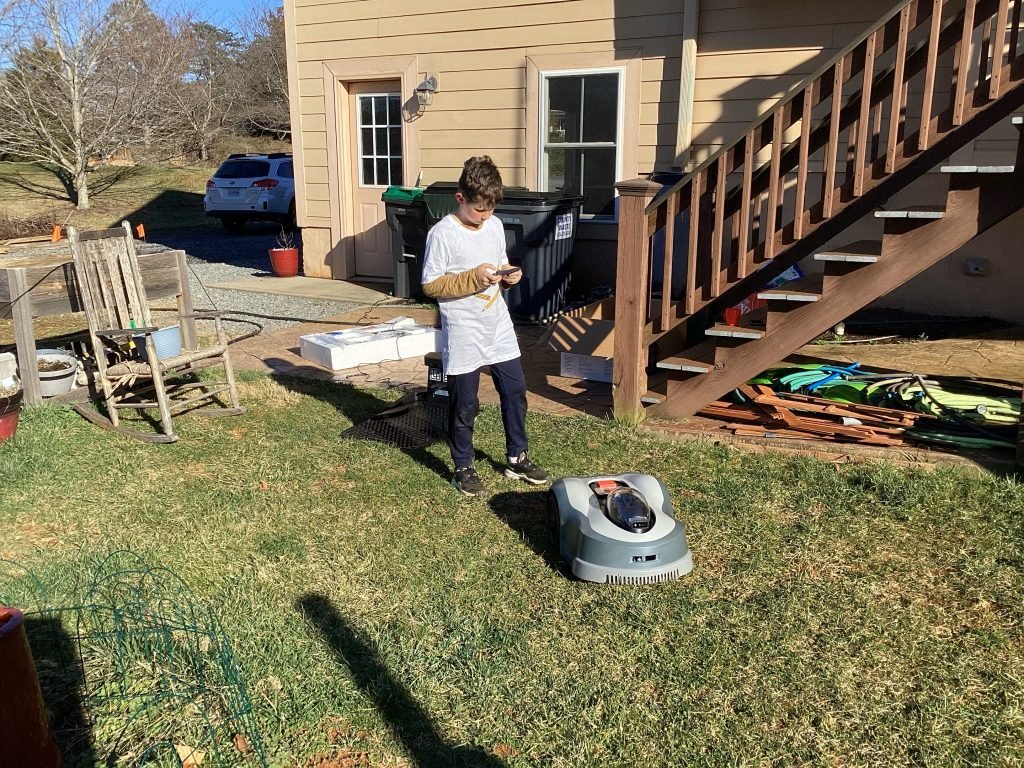
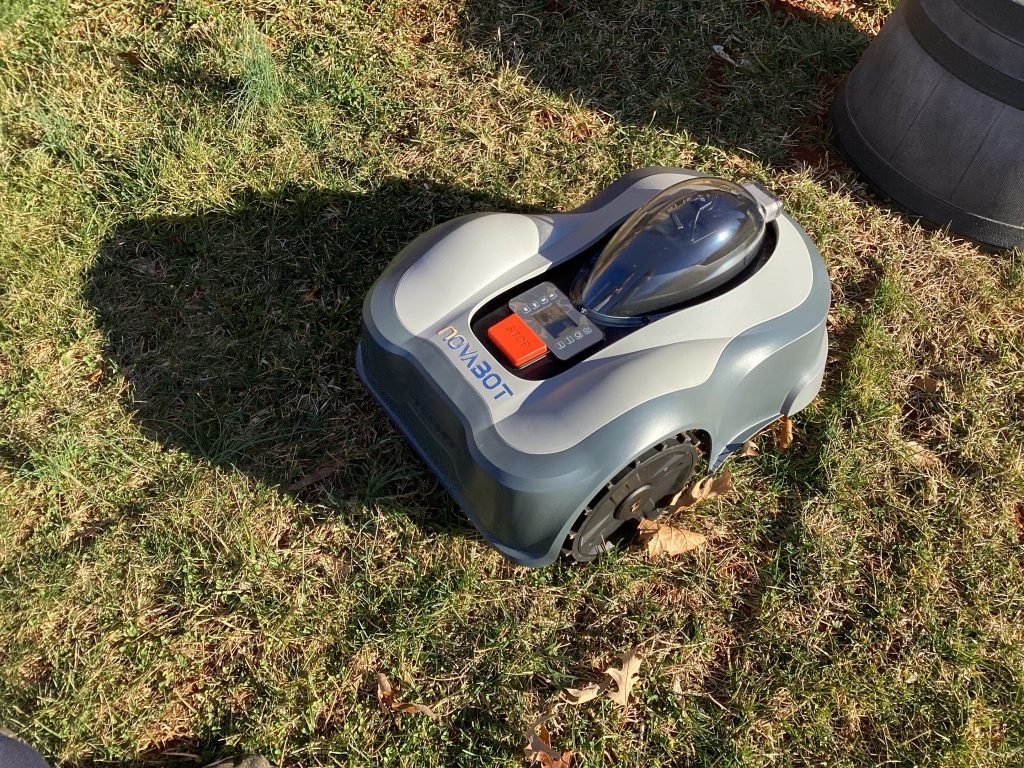
And the process of “driving” the Novabot around my yard to define the mowing boundary was super easy also. I actually had my 10 year old son do it. I’m crediting most of the ease of setup to the Novabot’s fantastic app. It’s very intuitive and it’s clear at every step what you need to do next and what you are doing at the moment. Again, many other robots should be this way but they were not. I can’t stand a bad app and the Novabot did not disappoint me in this regard. Here’s a few screenshots of the Novabot app:
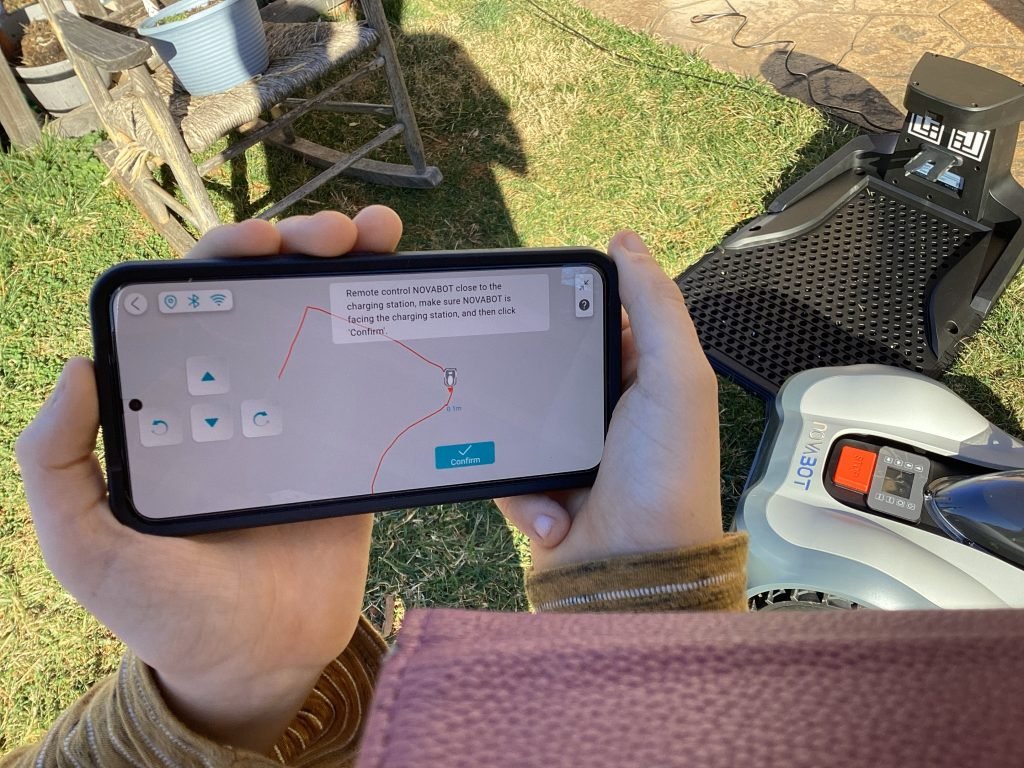
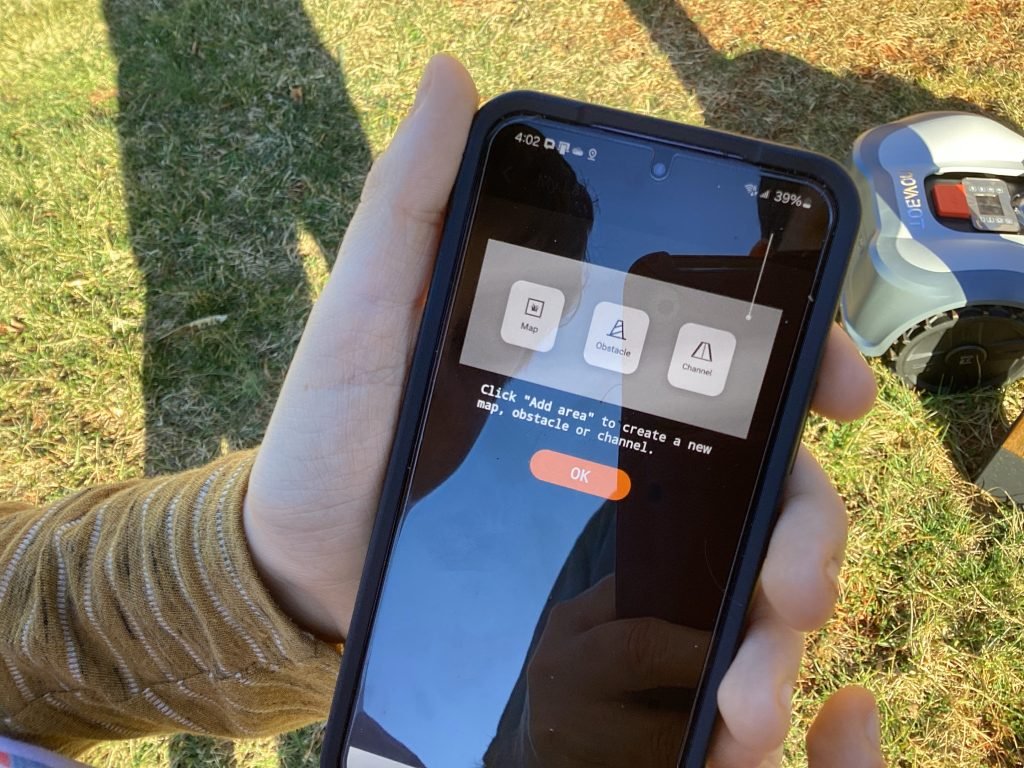
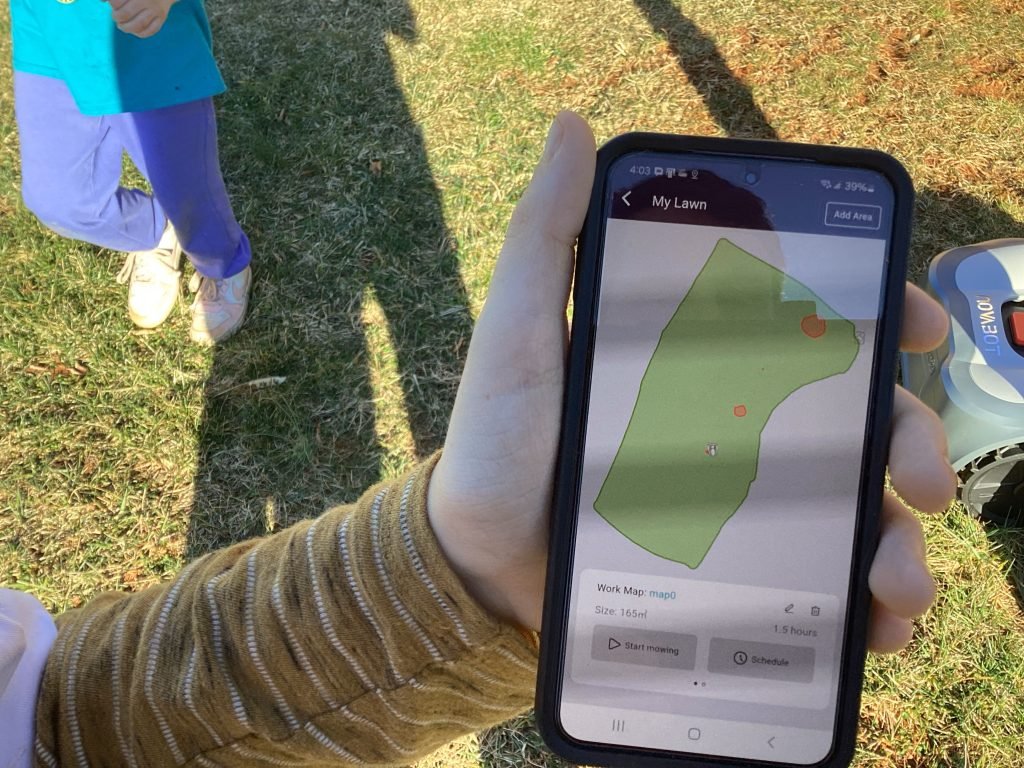
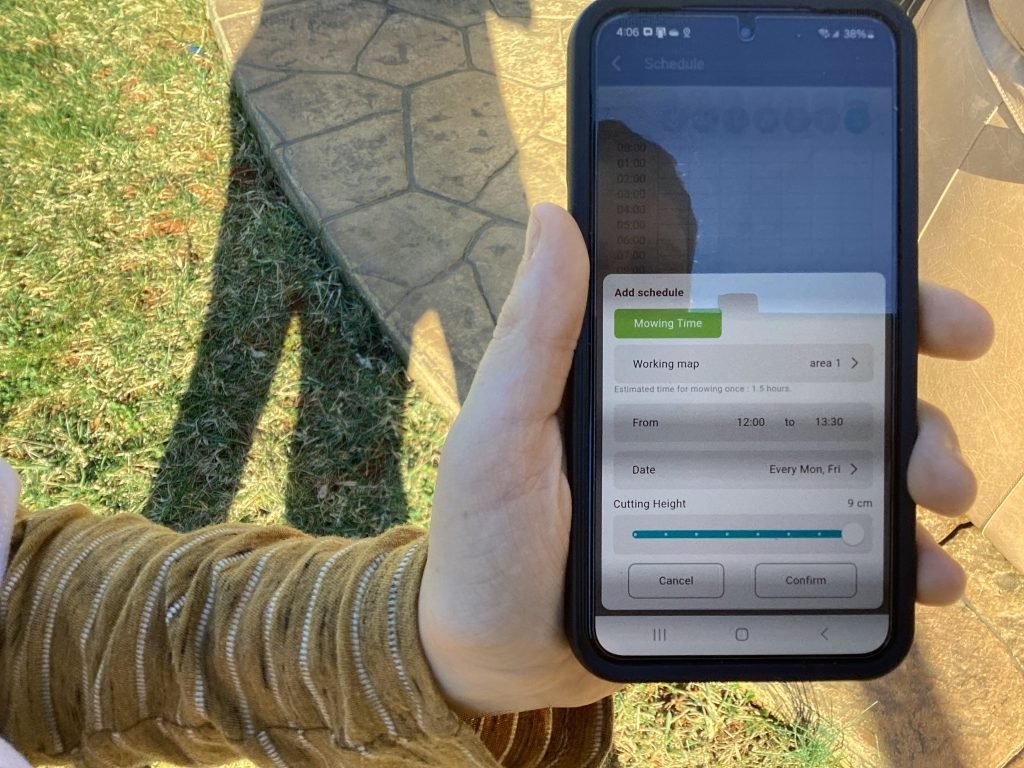
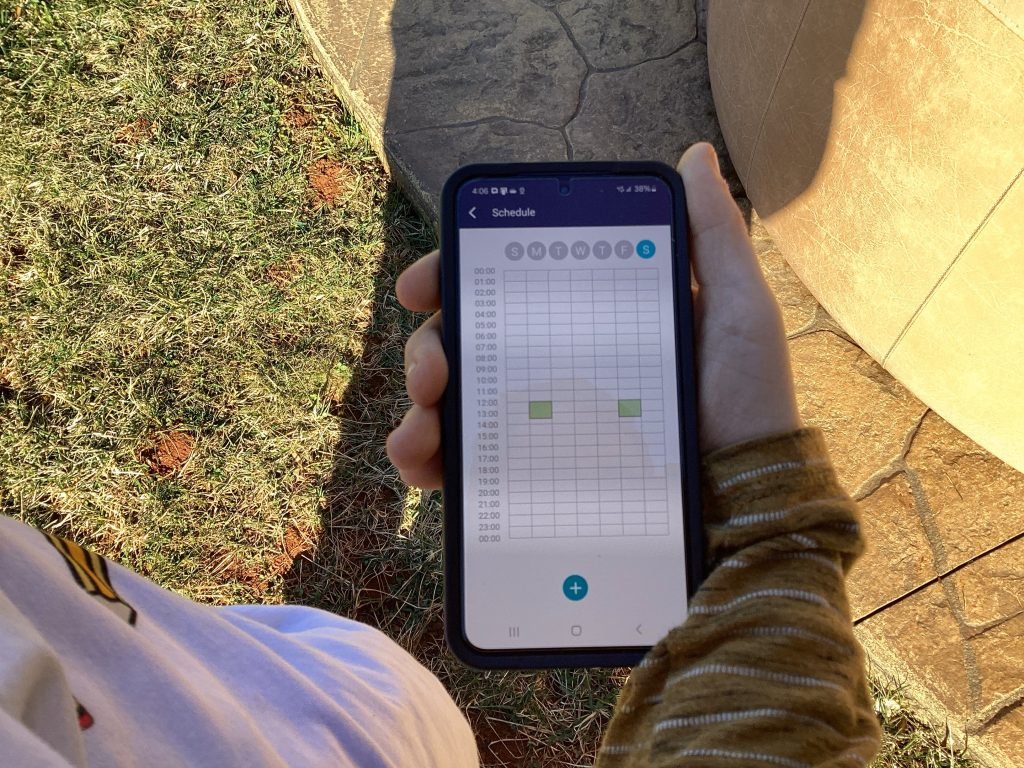
Mowing Performance
Overall, the mowing performance was what you would expect from a robot mower in this price range. It does mow in straight parallel lines, which is always nice to see. It mows about .05 acres per charge (for the N1000) so the speed is about on par with mowers of this size.
The cutting height maxes out on the short side at 70mm or just about 2.7 inches. For those who like longer grass lengths, there are some smaller mowers that go up to 3 inches and beyond. So the Novabot is definitely for those who prefer shorter cutting heights.
Obstacle avoidance also worked as advertised. We tried a few different obstacles of varying height and the mower adjusted on the fly and went around them.
Novabot Specs
Price: $2899 (N1000) $3399 (N2000)
- GPS/RTK navigation (no perimeter wire)
- ToF-based computer vision
- 1/4 acre – 1/2 acre range
- Max slope: 45 degrees
- Cutting height: 20mm – 70mm
- Parallel line mowing
- IPX 5 water resistance
Novabot Final Review
Overall, the technology within the Novabot seems to be sound. The GPS/RTK system along with their ToF-based vision system does work and creates a mower that can work in less-than-ideal RTK signal situations.
Where to Buy
Novabot mowers are currently being sold in our store.


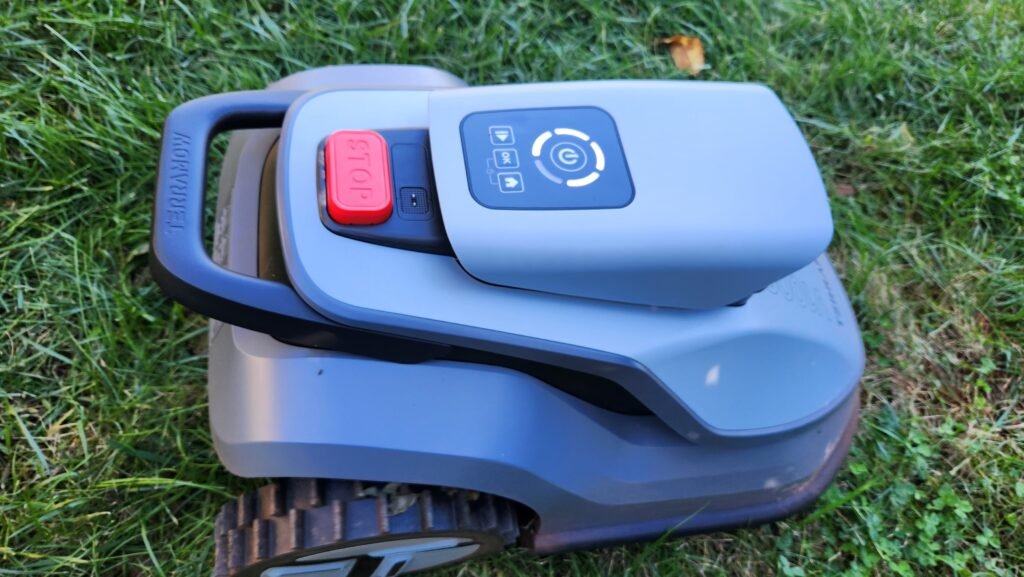
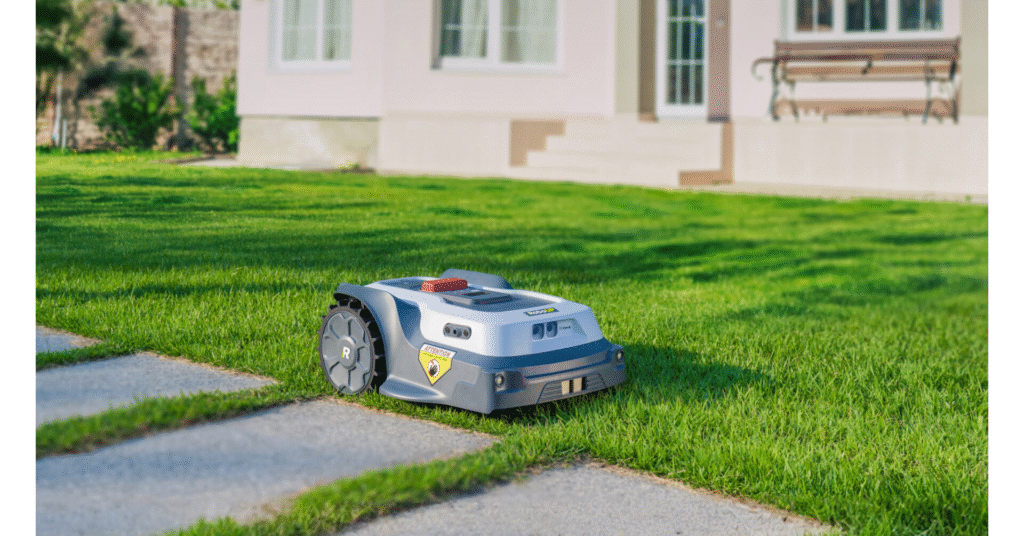


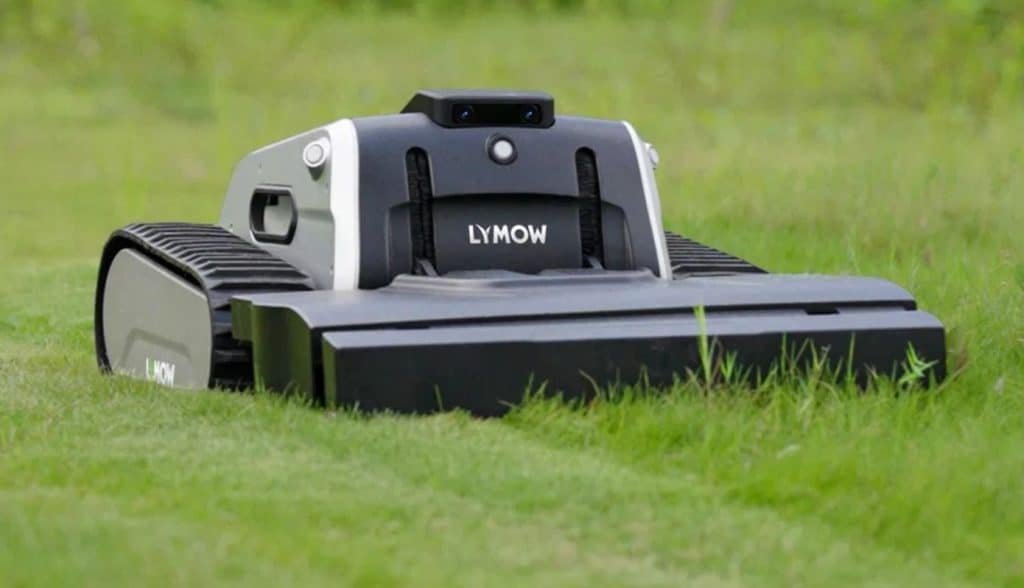






I got my N2000 in Dec. I can tell you it will not mow south Florida grass. My grass is just too thick and if you attempt to premow it down to a height it might work, I have no lawn left.